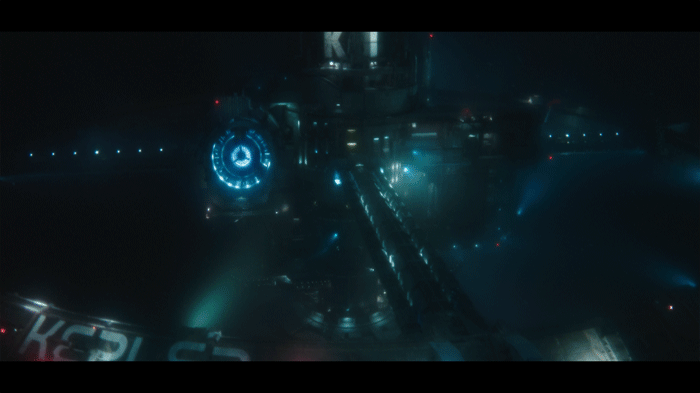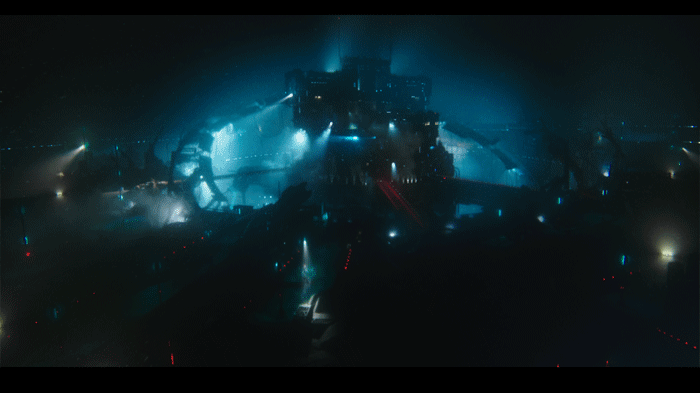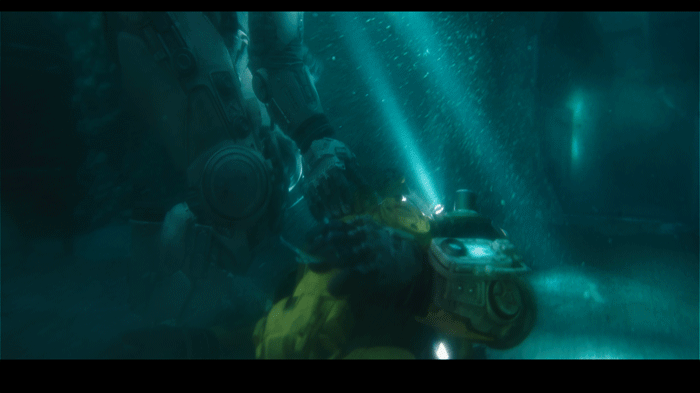VFX studio MPC has completed the VFX work for the movie Underwater, a 2020 American science fiction horror film directed by William Eubank and written by Brian Duffield and Adam Cozad. The film is produced by Chernin Entertainment and stars Kristen Stewart, Vincent Cassel, Jessica Henwick, John Gallagher Jr., Mamoudou Athie, and T.J. Miller.
The movie takes the audience into the under water ruins where a small crew of deep-sea miners, trapped in a rapidly flooding structure following a devastating earthquake, who faced coarse surrounding elements to fight for their survival.

Working as the lead vendor for Underwater, MPC Film’s VFX Supervisor Axel Bonami led the teams in Montreal, London and Bangalore, completing more than 400 shots. They created the full journey on a dry-for-wet shoot– from the submerged base, the whole pipe connecting to the Kepler Station, down to the ocean floor, through miles of under water desert, cold dark landscapes and to the final act at the main Roebuck station. MPC built all external assets outside of the under water station.

The film was the last Fox film to be released under the 20th Century Fox name, before its new owner, The Walt Disney Company, changed the name of the studio to 20th Century Studios. For the movie MPC team has tweaked the shooting technique to make it as real as possible under water. As the team reveals, “The shoot took place on dry land and MPC Film had the difficult challenge of making every frame appear as if it were shot under water. In order to keep the atmosphere of the murky under water environment on set, and to keep the actors immersed, black screens were used instead of green screens. There actors wore under water suits with the visors removed and there were practical props and sets for the actors to interact with.”

The clips which are shot outside the Roebuck station are completely computer-generated environments where CG visors were inserted later. In addition to that, MPC has built CG drills, elevator, escape pods, cranes, platforms and cables for the exterior of the station to give the complete look of under water station.

As most of the production was done under low lighting condition, the VFX team used LED tracking markers and illuminated ping pong balls for tracing and adjustments. In respect to that the studio has focused to all the details which were required to create the look of the CG water.
“Photorealistic bubbles, debris, silt and algae were crafted to give the feeling of extreme depth and claustrophobia. MPC’s R&D team focused on upgrading particle shading because of the amount required in shaping the under water shots” highlighted the team.

Apart from that MPC Film’s Character Lab have also created the Behemoth, a 700-meter-long deep-sea monster, who later is joined by thousands of other creatures. The Clinger, which was the main creature that hunts humans; its design resembles of an elongated ghostly biped with pale, translucent skin. The designs for both creatures Behemot and Clinger were based on concept art, but various sea life and deep-water creatures were used as reference for the realistic look of the skin qualities and detailing.

The MPC artist underwent with the most challenges for a sequence where a cargo lift crashes to the ocean floor, collapsing a maintenance tube. “This scene was particularly complex because of the CG under water environment being incorporated during the collapse and the addition of fiery elements of the damaged tube. The combination of large scale photorealistic water effects, crafting a feeling of under water claustrophobia and the addition of the monster covered in parasites proved a multilayered challenge for MPC.”
Usually the water sequences are challenging to create VFX-wise but it seems like MPC did a great job making it as picturesque and real as possible.
